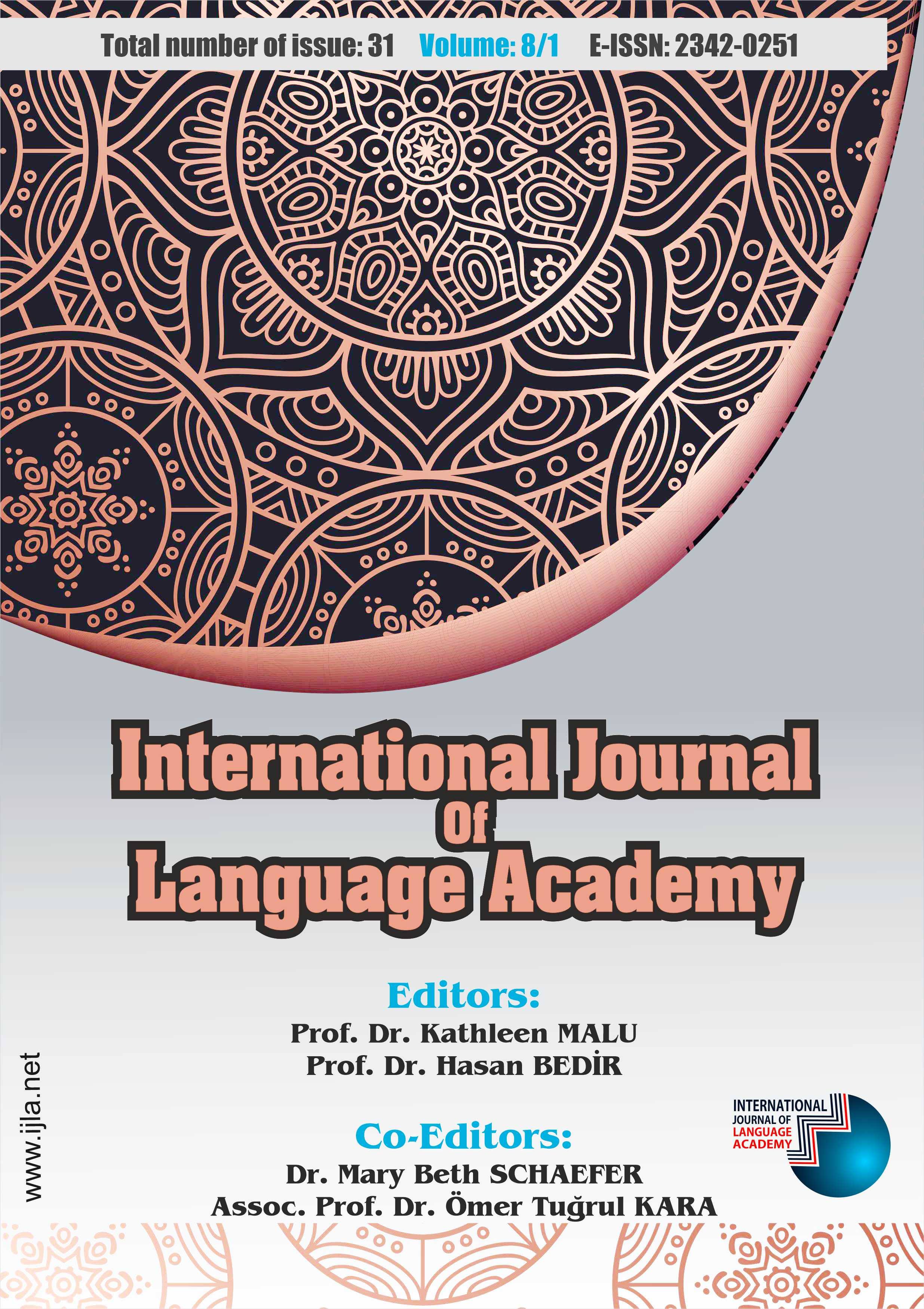Author :
Abstract
Makine çevirisi çalışmaları, özellikle 1960’lı yıllarda hız kazanmış ve ilk sistemlerin oluşturulmasıyla birlikte bu alandaki yöntem ve yaklaşımlar da somutlaşmaya başlamıştır. Bununla birlikte, çeviriyi otomatik sistemler aracılığıyla gerçekleştirme fikri çok daha eski tarihlere kadar uzanır. Bu konudaki ilk oluşumlar 17. Yüzyılda Descartes ve Leibniz tarafından ileri sürülen dilin kodlarla gösterilmesine yönelik fikirlere dayandırılmaktadır. Sonraki dönemlerde çeşitli öneriler ortaya atılsa da bu alandaki ilk somut adımlar 1930’lu yıllarda Fransız ve Rus profesörler tarafından mekanik beyin olarak adlandırılan çalışmalarla atılmıştır. Makine çevirisi kendi başına bağımsız bir araştırma alanı değildir. Başka bir deyişle, çevirinin mekanik ortamda gerçekleştirilmesi düşüncesi sadece mühendislik alanını ilgilendiren bir konu değildir. Aksine, dilbilim, bilgisayar bilimleri, fen bilimleri, çeviribilim gibi çeşitli alanlarla bağlantılı olan disiplinler arası bir alandır. Dolayısıyla makine çevirisi alanı bu bilim dallarından birçok konuda beslenen hatta onlarla eşgüdümlü çalışmalar gerektiren bir araştırma alanıdır. Bu çalışmanın amacı, geçmişten günümüze kadar makine çevirisi alanında ortaya konulan çeviri yaklaşımlarının çeviri kuramlarıyla olan ilişkisinin genel anlamda incelenmesidir. Çalışmada çeviri kuramlarıyla otomatik çeviri yaklaşımları karşılaştırmalı olarak ele alınmıştır. Ardından makine çevirisinin tarihsel süreçte çeviri kuramlarından ne ölçüde yararlandığı üzerinde durulmuştur. Sonuç olarak çeviri kuramlarının bu yaklaşımlara büyük oranda ışık tuttuğu ve bu yaklaşımların ilerlemesinde önemli rol üstlendiği değerlendirilmiştir. Bu çalışmanın çeviribilim ve bilgisayarlı çeviri alanlarında gerçekleştirilecek olan araştırmalara bazı katkılar sunabileceği düşünülmektedir.
Keywords
Abstract
Machine translation studies gained speed especially in the 1960s, and with the creation of the first systems, methods and approaches in this field began to concrete. However, the idea of translating through automated systems goes back to much earlier dates. The first formations on this subject are based on ideas for the representation of the language proposed by Descartes and Leibniz in the 17th century with codes. Although various suggestions were made in the following periods, the first concrete steps in this area were taken in 1930s by the French and Russian professors through the so-called mechanical brain. Machine translation is not an independent research area by itself. In other words, the idea of performing the translation in a mechanical environment is not only a matter of engineering. On the contrary, it is an interdisciplinary field connected with various fields such as linguistics, computer science, science and translation studies. Therefore, the field of machine translation is a field of research that feeds on many subjects from these disciplines and even requires coordinated studies with them. The aim of this study is to investigate the relationship between translation approaches in the field of machine translation, especially with translation theories. In the study, translation theories and machine translation approaches are discussed comparatively. Then, the extent to which machine translation has benefited from translation theories in the historical process has been emphasized. As a result, it has been evaluated that translation theories shed light on these approaches and played an important role in the progress of these approaches. It is thought that this study may offer some contribution to the researches that will be carried out in translation and computer translation.
Keywords
- Aksan, D. (2007). Her yönüyle dil: Ana çizgileriyle dilbilim. Ankara: Türk Dil Kurumu
- Antony, P. J. (2013). Machine translation approaches and survey for Indian languages. Computational Linguistics and Chinese language Processing, 18(1), 47-78.
- Aslan, E. (2019). Makine çevirisi. İstanbul: Hiperyayın.
- Balkul, H. İ. (2016). Translation technologies: A dilemma between translation industry and academia. International Journal of Language Academy, 4(4), 100-108.
- Carl, M., ve Way, A. (2003). Recent advances in example-based machine translation. London, UK: Kluwer Academic Publishers.
- Chéragui, M. A. (2012). Theoretical overview of machine translation. M. Malki, S. Benbernou., S. M. Benslimane ve A. Lehireche (Ed.), 4th International Conference on Web and Information Technologies (s. 160-169) içinde. Sidi Bel Abbès, Algeria.
- Dajun, Z. ve Yun, W. (2015). Corpus-based machine translation: Its current development and perspectives. International Forum of Teaching and Studie, 11(1-2), 90-95.
- Fung, P. ve McKeown, K. (1997). A technical word-and term-translation aid using noisy parallel corpora across language groups. Machine Translation, 12, 53-87.
- Holmes, J. (1975). Translated!. papers on literary translation and translation studies. Amsterdam, NL: Rodopi.
- Hutchins, W. J. ve Somers, H. L. (1992). An introduction to machine translation. London, UK: Academic Press Limited.
- Kıran, Z. ve Kıran, A. (2006). Dilbilime giriş. Ankara: Seçkin.
- Lederer, M. (1994). La traduction aujourd'hui. Vanves, FR: Hachette.
- Okpor, M. (2014). Machine Translation Approaches: Issues and Challenges. IJCSI International Journal of Computer Sciences Issues, 11(5), 159-165.
- Pathak, A. ve Pakray, P. (2018). Neural machine translation for Indian languages. Journal of Intelligent Systems, 465-477.
- Revanuru, K., Turlapaty, K. ve Rao, S. (2017). Neural machine translation of Indian Languages. Compute '17: Proceedings of the 10th Annual ACM India Compute Conference (s. 11-20) içinde. New York, NY; Association for Computing Machinery.
- Somers, H. (2003). An overview of EBMT. M. Carl ve A. Way (Ed.), Recent Advances in Example-Based Machine Translation (s. 3-57) içinde. London: Kluwer Academic Publishers.
- Şahin, M. (2013). Çeviri ve teknoloji. İzmir: Mengi Basım.
- Tok, Z. (2019). Şiir çevirisi ve Fransızcadaki söz sanatlarının Türkçeye aktarımı. International Social Science Studies Journal, 5(34), 2253-2260.
- Türe, F. (2008). A hybrid machine translation system from Turkish to English (Yüksek lisans tezi). Sabancı Üniversitesi Mühendislik ve Doğa Bilimleri Fakültesi, İstanbul.
- Uğur, A. ve Kınacı, A. C. (2006). Yapay zeka teknikleri ve yapay sinir ağları kullanılarak web sayfalarının sınıflandırılması. M. Akgül, E. Derman, U. Çağlayan ve A. Özgit (Ed.), ''Türkiye'de İnternet" Konferansı Bildirileri (s. 369-373) içinde. Ankara: TOBB Ekonomi ve Teknoloji Üniversitesi.
- Vardar, B. (2002). Açıklamalı dilbilim terimleri sözlüğü. İstanbul: Multilingual Yayınları.
- Vinay, J. P. ve Darbelnet, J. (1995). Comparative stylistics of French and English: A methodology for translation. Amsterdam, NL: John Benjamin Publishing Company.
- Yalçın, P. (2015). Çeviri stratejileri kuram ve uygulama. Ankara: Grafiker.





